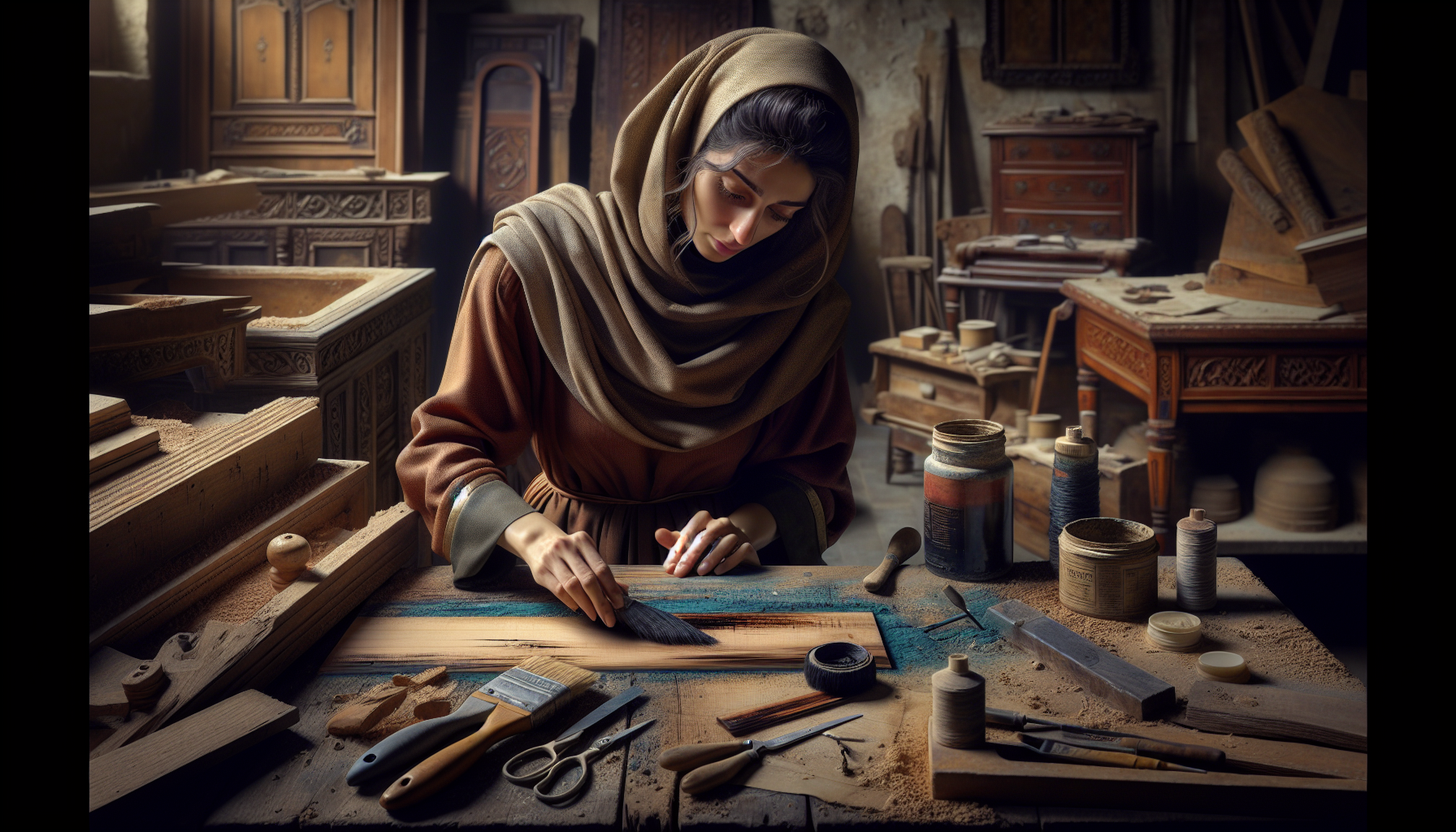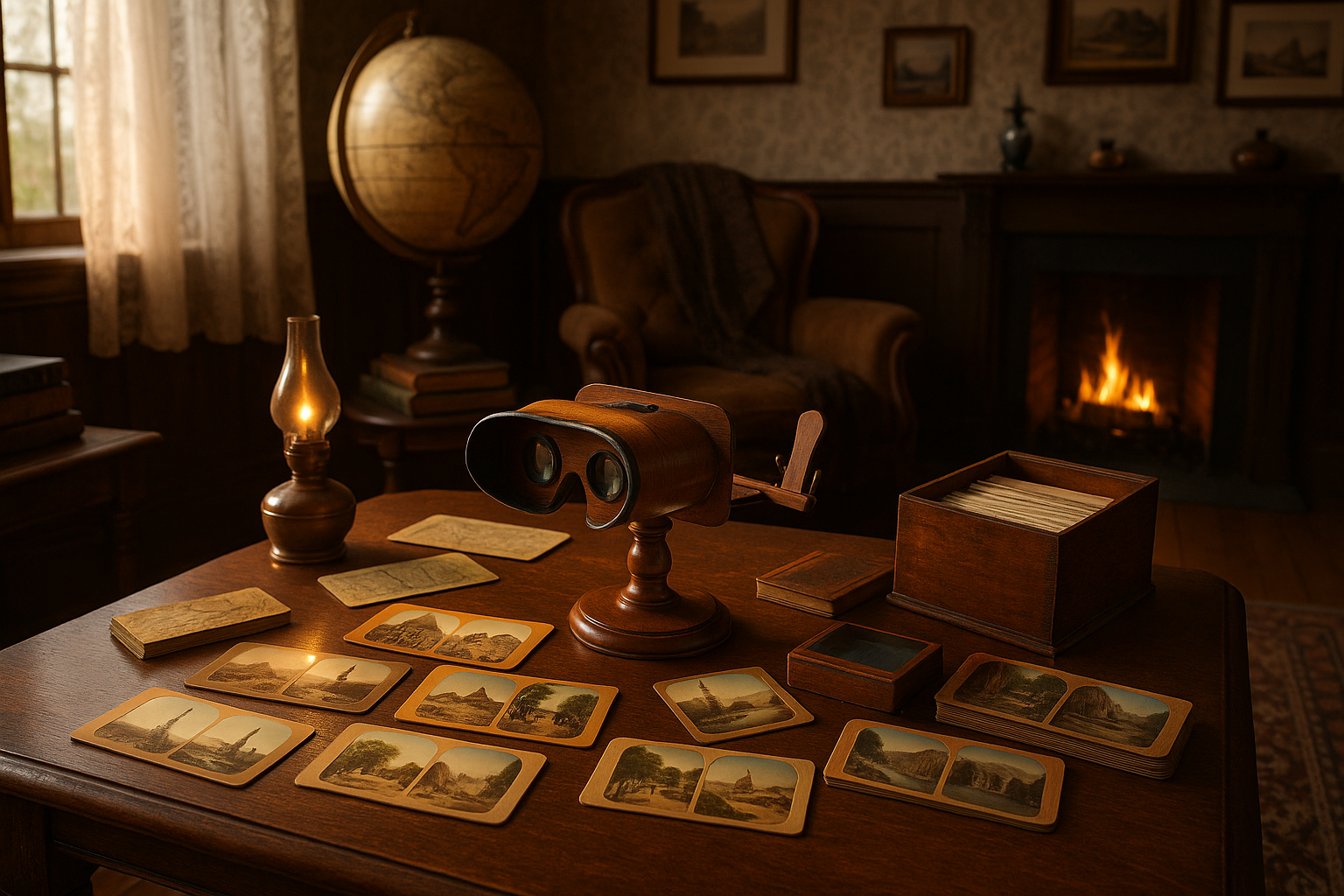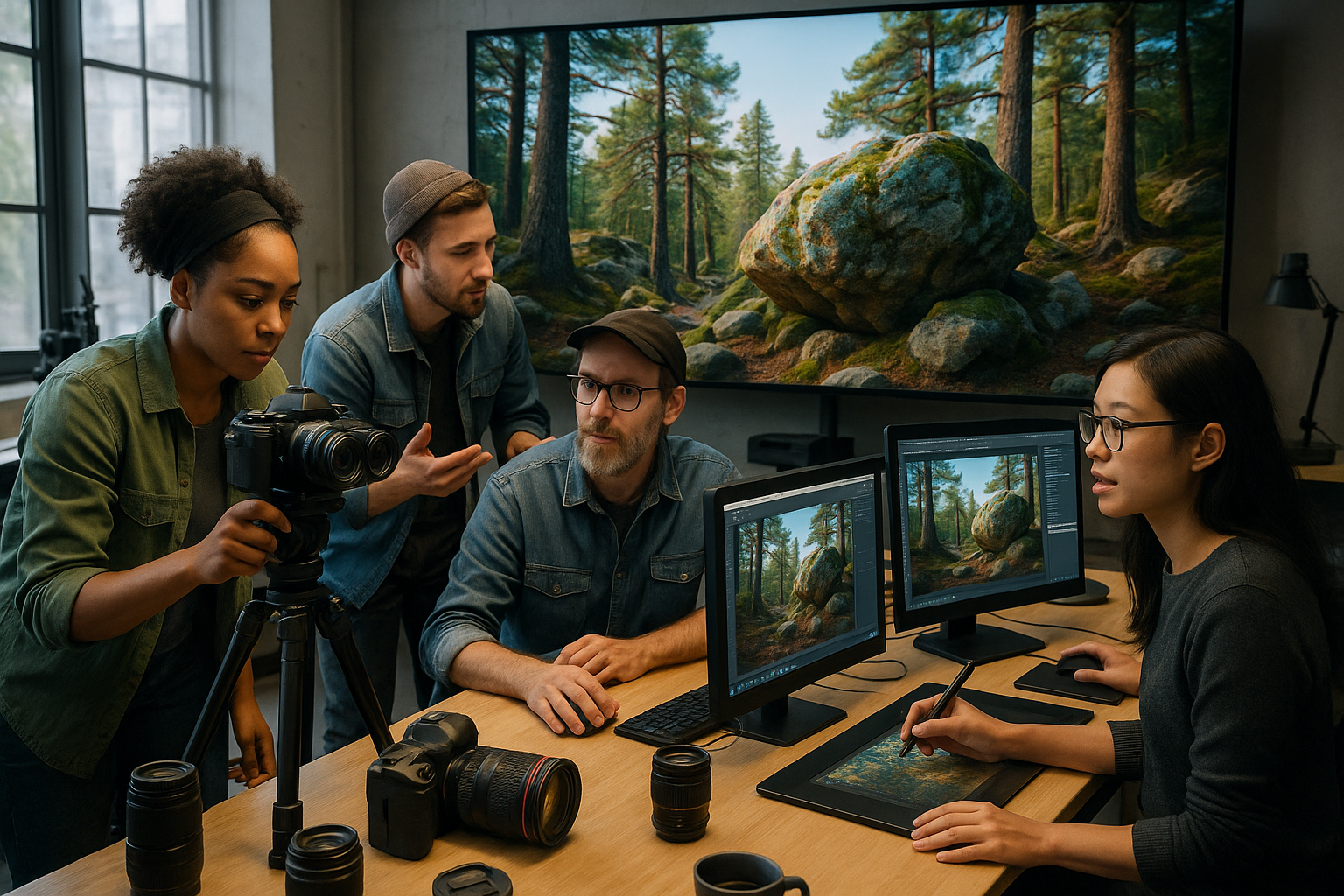In a world where the past continually informs the present, there’s something undeniably enchanting about the art of restoration. Whether it’s a cherished family heirloom, an antique piece of furniture, or a vintage architectural masterpiece, the process of reviving these items is akin to weaving stories that transcend time. Imagine walking into a room where each piece whispers tales of bygone eras, where every detail holds the fingerprint of history itself. Restoration is not merely about repair; it’s an intricate dance between the past and the present, a celebration of craftsmanship that honors what once was while breathing new life into it. This journey of transformation not only preserves history but also enriches our lives by connecting us with narratives that might otherwise be lost. 🌟
In this blog, “Revive and Renew: Unlocking the Secrets of Effective Restoration Techniques for a Beautiful, Timeless Finish,” we embark on an exploration of the profound techniques and philosophies that underpin successful restoration. From the meticulous selection of materials that respect the original creation to the modern innovations that enhance their durability and appeal, this article serves as a comprehensive guide for both the novice restorer and the seasoned artisan. We delve into the essential principles that govern the restoration process, including the importance of authenticity, the balance between conservation and enhancement, and the ethical considerations that accompany this transformative work. By understanding these foundational elements, you’ll gain insight into how to achieve a finish that is not only beautiful and timeless but also deeply respectful of the object’s original spirit.
Throughout the following sections, we will uncover the secrets of effective restoration, from practical tips and expert advice to inspirational case studies that demonstrate these principles in action. We’ll explore various techniques, such as cleaning, repairing, and refinishing, and discuss how each contributes to the overall success of a project. You’ll learn about the tools and materials essential for achieving professional-grade results, as well as the importance of patience and precision in every step of the journey. By the end of this article, you’ll be equipped with the knowledge and confidence to undertake your restoration projects, transforming objects of the past into treasures that will continue to captivate for generations to come. Whether you’re motivated by the challenge of restoration or the sheer joy of reviving a piece of history, this guide promises to be an invaluable resource on your path to creating something truly remarkable. 🔧✨
The Art of Restoration: An Introduction
Restoration is more than a process; it’s an art form. Breathing new life into something that has seen better days, restoration is about preserving history, culture, and functionality. This practice spans various domains, from antique furniture to architectural masterpieces. In each scenario, the ultimate goal is to maintain the item’s original integrity while enhancing its aesthetic appeal. Whether you’re restoring a family heirloom or a historic building, the techniques you choose can make all the difference. In this article, we will delve into the secrets of effective restoration techniques that not only revitalize your items but also ensure they stand the test of time.
The journey of restoration begins with understanding the object’s historical and material background. This step is crucial as it informs the entire process, ensuring that the methods applied are sympathetic to the original construction. For instance, restoring a Victorian-era chair requires different skills and materials than a mid-century modern piece. By identifying the period and style, restorers can choose appropriate tools and techniques, thus preserving the item’s authenticity.
Material selection is another cornerstone of successful restoration. Choosing the right materials can mean the difference between a superficial repair and a long-lasting restoration. For instance, using period-specific wood, finishes, and fasteners can significantly enhance the item’s longevity and value. This approach not only respects the craftsmanship of the original creators but also upholds the historical narrative embodied by the piece.
Techniques and Methods: The Core of Restoration
Effective restoration techniques often involve a mix of traditional skills and modern technology. Traditional skills such as woodworking, metalwork, and textile weaving are invaluable, especially when dealing with artifacts that require a delicate touch. These skills ensure that the restoration work blends seamlessly with the original, creating a cohesive and authentic appearance. However, modern technology also plays a crucial role. Innovations such as laser cleaning, 3D scanning, and digital reconstruction allow restorers to address issues that were once deemed irreversible.
One particularly valuable technique is the use of non-invasive methods for surface cleaning. Utilizing materials like gentle solvents, micro-abrasion tools, or laser cleaning can remove years of grime and dirt without damaging the underlying material. This method is especially beneficial for delicate surfaces such as paintings or intricate woodwork. To see this technique in action, check out this informative video on YouTube: “Restoration Techniques for Beginners” by the channel “Art Conservation Techniques.”
Structural integrity is another critical aspect of restoration. This involves addressing any underlying issues that could compromise the item’s stability. For instance, a wobbly chair may require re-gluing or replacement of joints, while a cracked ceramic piece might need filling and retouching. The goal is to strengthen the object without altering its appearance or functionality. Techniques such as dowel reinforcement, spline insertion, and resin infusion are often employed to achieve this balance.
Comparative Analysis of Restoration Materials
| Material | Benefits | Drawbacks |
|---|---|---|
| Wood | Strong, durable, aesthetically pleasing | Susceptible to moisture and insect damage |
| Metal | Durable, can be molded and shaped | Prone to rust and corrosion |
| Textiles | Flexible, diverse textures and colors | Fragile, susceptible to fading and wear |
Check the table above to compare various restoration materials and their unique properties. Understanding these can help you make informed decisions during your restoration projects.
Case Studies in Restoration: Learning from the Masters
Exploring real-world case studies provides invaluable insights into the practical application of restoration techniques. Famous restoration projects, such as the Sistine Chapel or the Notre-Dame Cathedral, offer lessons in perseverance, innovation, and respect for historical authenticity. These projects often involve interdisciplinary teams of historians, conservators, and artisans working together to achieve a common goal: preserving history for future generations.
The restoration of the Sistine Chapel, for example, employed cutting-edge technology to clean and preserve Michelangelo’s iconic frescoes. This project demonstrated the importance of interdisciplinary collaboration and the need for a deep understanding of the materials and techniques used by the original artists. By employing state-of-the-art methods such as laser cleaning and spectral imaging, the restoration team was able to reveal the original vibrancy of the frescoes without compromising their integrity.
On a smaller scale, individual artisans also contribute to the field of restoration through innovative approaches. For example, the restoration of antique furniture often requires a blend of craftsmanship and creativity. Techniques such as marquetry, veneering, and French polishing are employed to enhance the aesthetic appeal of the piece while ensuring its longevity. By examining these case studies, restorers can gain inspiration and practical knowledge that can be applied to their projects.
Steps to Start Your Own Restoration Project
- Research the history and materials of the object.
- Choose the appropriate restoration techniques based on the object’s needs.
- Gather the necessary tools and materials for the restoration process.
- Carefully plan each step of the restoration, ensuring attention to detail.
- Seek guidance from experts or online resources if needed.
Begin your own restoration project by following these steps. Remember, patience and attention to detail are key to achieving a beautiful, timeless finish.

Conclusion
In conclusion, the journey through “Revive and Renew: Unlocking the Secrets of Effective Restoration Techniques for a Beautiful, Timeless Finish” has been both enlightening and inspiring. We have traversed a comprehensive landscape of restoration methods, unraveling the mysteries of transforming old and worn-out objects into pieces of art that defy time. Our exploration began with an understanding of the fundamental importance of assessing the condition of an item before undertaking any restoration process. Recognizing the material, historical significance, and intended use of the piece sets the foundation for a successful restoration project.
The article delved into various techniques, each with its unique application and outcome. From the careful cleaning and preparation of surfaces to the intricate art of color matching and finishing, we emphasized the need for precision and patience. The role of technology and modern tools in enhancing traditional methods was also highlighted, showcasing how innovation can breathe new life into age-old practices. Moreover, the importance of sustainable and eco-friendly practices was underscored, reminding us of our responsibility to the environment even as we pursue aesthetic beauty.
The narrative then led us through specific case studies, illustrating how these techniques have been employed to remarkable effect. Whether it was the restoration of a century-old wooden table or the revitalization of a classic painting, each story reinforced the transformative power of restoration. The fusion of science and art in these processes was evident, requiring both technical skill and creative vision.
We also examined the emotional and cultural significance of restoration. Restoring an object is not merely about aesthetics; it is about preserving memories and honoring craftsmanship. The stories embedded in these items connect us to our past and inspire future generations to appreciate and continue the legacy of fine craftsmanship.
As we conclude, it is crucial to recognize the broader implications of restoration in our lives. Restoration is not limited to physical objects; it is a metaphor for renewal and rejuvenation in various aspects of life. Just as we restore furniture or artwork, we can apply these principles to our personal and professional lives, continuously seeking growth and improvement.
We invite you, dear reader, to take what you’ve learned and explore the world of restoration further. Whether you are a seasoned professional or a curious novice, there is always something new to discover in this ever-evolving field. Share your insights and experiences, engage with fellow enthusiasts, and perhaps embark on your own restoration project. The community of restoration is vast and welcoming, full of individuals passionate about preserving beauty and history.
Your involvement in this field can make a significant impact. By sharing your newfound knowledge and skills, you contribute to the preservation of cultural heritage and the promotion of sustainable practices. Encourage others to join this movement, fostering an appreciation for the craftsmanship and history that surrounds us.
To further your exploration, consider accessing additional resources and communities online. Websites like the American Institute for Conservation and The Getty Conservation Institute offer valuable insights and opportunities for deeper engagement in the world of restoration.
As you embark on your restoration journey, remember that each project is a testament to your dedication and vision. May your efforts bring beauty, joy, and inspiration to you and those around you. Let us embrace the art of restoration as a lifelong pursuit, always striving to revive and renew the timeless treasures of our world. 🌟
Toni Santos is a visual historian and artisan whose creative lens is captivated by the forgotten marvels of antique optical devices. Through his thoughtful storytelling, Toni revives the instruments that once transformed light into wonder—camera obscuras, magic lanterns, kaleidoscopes, and other ingenious tools that shaped our earliest visual imaginations.
His journey is rooted in a fascination with how humans have long sought to bend, reflect, and reveal the unseen. Whether tracing the mechanical poetry of 19th-century projectors or illustrating the tactile elegance of early lenses, Toni’s work invites us to see vision itself as an evolving art form.
Blending handcrafted design with historical inquiry, Toni brings to life the material soul of these devices—celebrating not just how they functioned, but what they meant. His creations and curated stories illuminate a world where science, illusion, and beauty were intricately linked through glass and brass.
As the curator of Vizovex, Toni shares detailed studies, reconstructed artifacts, and immersive content that help others rediscover the origins of visual technology and the magic of analog perception.
His work is a tribute to:
The craftsmanship behind early visual instruments
The wonder of seeing through the eyes of another century
The intersection of optics, art, and imagination
Whether you’re a collector, a designer, or someone drawn to the lost poetry of vision, Toni welcomes you into a world where light is a storyteller—one prism, one lens, one forgotten invention at a time.





